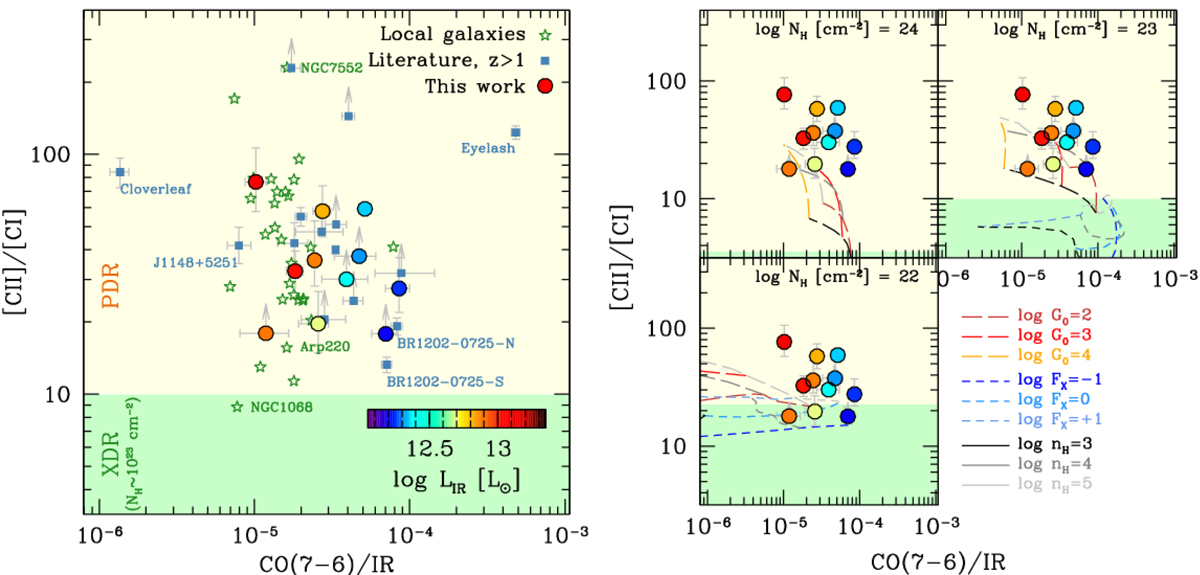Fig. 7.

Download original image
Observed [C II]/[C I] luminosity line ratio, as a function of the CO(7–6)/IR luminosity ratio (left panel), for the quasars in our study (filled circles; see references in the main text), as well as other high redshift (z > 1) galaxies and quasar hosts (filled squares) and local galaxies (empty stars, based on Rosenberg et al. 2015). All the quasars in our study show [C II]/[C I] ratios ≳20, which are not compatible with XDRs. Our sample also displays a range of CO(7–6)/IR ratios comparable with other high–z sources, but a factor ∼2−3× higher than the bulk of the local galaxies. Right: predictions of the [C II]/[C I] ratio as a function of the CO(7–6)/IR luminosity ratio for various gas densities log nH[cm−3] = (3, 4, 5) for a PDR with incident radiation field log G0 = (2, 3, 4) and an XDR with log FX = ( − 1, 0, +1). Our sources (shown in filled circled, with the same color scheme as in the left-hand panel) are best described by a PDR–like environment with NH ∼ 1023 cm−2, nH ≳ 104 cm−3, and G0 ∼ 103.
Current usage metrics show cumulative count of Article Views (full-text article views including HTML views, PDF and ePub downloads, according to the available data) and Abstracts Views on Vision4Press platform.
Data correspond to usage on the plateform after 2015. The current usage metrics is available 48-96 hours after online publication and is updated daily on week days.
Initial download of the metrics may take a while.


